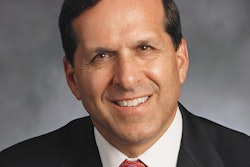
Dr. Roger P. Levin brings you the most thought-provoking topics from the Dental Business Study Clubs, an organization focused on the business of successful dentistry. Each month, Dr. Levin will explore an aspect of the business of dentistry in detail.
Leadership is one of the most talked about topics in business, but it's by far the least understood. Why is this?
Perhaps it's because leadership is a qualitative behavior rather than a quantitative science. It's not possible to simply talk about 10 steps of leadership and boom -- everybody is trained. It takes time to understand and implement in your own unique work environment, but it's worth it. Great leaders motivate their teams to do great things. Do you know what it takes to be a great leader?
5 things to know
Your success as a practice leader depends heavily on your leadership skills. Want to know more about leadership? Consider these five components to becoming an effective leader.
1. Office culture
 Roger P. Levin, DDS, is the executive founder of the Dental Business Study Clubs.
Roger P. Levin, DDS, is the executive founder of the Dental Business Study Clubs.In the Study Clubs, we identify three key messages that will create the desired culture for the dental practice. Messages could focus on customer service, clinical care, teamwork, new patients, patient referrals, or a fun working environment. Based on individual philosophies, the messages will help determine what type of team members should be hired. Team members who want to have fun in an office that has a very serious tone will eventually be unappreciated and unhappy. It doesn't mean they are bad employees -- they just aren't the right fit for the job.
Once you've decided what messages you want to communicate to your team, repeat those messages in as many ways as possible. By regularly repeating them, they will help create a culture that the team can understand, live by, and live up to. This is often the No. 1 factor in leadership.
2. Your mission
Your mission statement should define one thing -- why you go to work every day. Microsoft had a mission of putting a computer on every desk. And while their employees had different reasons for working there, they all understood that the company had only one business purpose -- to put a computer on every desk.
“Do your staff members know why they come to your practice every day?”
Do your staff members know why they come to your practice every day? If the practice doesn't define it for them, they will define it for themselves. They may have many different reasons, including money, the satisfaction of helping people, or a love of dentistry. These are all valid reasons, but they are very different from each other, and they work toward creating a disenfranchised team.
Disenfranchised teams often have conflicts and are rarely focused on the same thing. When you establish a mission and create key messages that are repeated around it, your team will begin to come together. Some may opt out, determining that they are no longer the right fit for the job. This is unfortunate, but it brings the rest of the team together in a powerful way, and the office will be able to attract new staff members who will want to be a part of the practice.
3. Leading by example
A powerful leader leads by example. If you want a calm team, become calm. If you want a team with a positive attitude, demonstrate yours. If you want a team that is motivated, be motivated.
Whatever behaviors you want to see in your team, displaying them yourself is essential. Ultimately, that is what leadership is all about. Being the leader is asking the team to follow you and in some ways be like you. They don't have to be carbon copies of your personality, but they do want a leader they can respect, understand, and emulate.
4. Meetings
Meetings are difficult for dental practices because they take away time from patient care and require the team to shift into a mode of sitting down and communicating. However, I would argue that meetings are one of the most critical factors in practice success. When team meetings are properly executed, the time it takes to have them will be paid back over and over.
Practices should have three meetings:
- The first is the daily business meeting to organize the entire day.
- The second is the monthly business review that reviews key performance indicators to determine practice performance and areas of improvement.
- The third meeting is a quarterly or annual strategy meeting on how to improve practice performance.
After 35 years as the CEO of a leading dental consulting firm that has worked with more than 30,000 practices, I have repeatedly seen that the best practices have meetings that allow for effective communication, continual improvement, and increased staff longevity.
5. Problem resolution
Many dentists tend to shy away from confrontation because it is an unpleasant component of leadership. However, every business that has teams has issues. When problems arise, they should be addressed right away. The earlier you handle them the better the opportunity for resolution and improved performance.
Solid understanding
Having a solid understanding of leadership can help you better guide and motivate your team. Use these five components of leadership to help you improve in your role as a practice leader for the betterment of your team and your practice.
Roger P. Levin, DDS, is the executive founder of the Dental Business Study Clubs.
The comments and observations expressed herein do not necessarily reflect the opinions of DrBicuspid.com, nor should they be construed as an endorsement or admonishment of any particular idea, vendor, or organization.



















